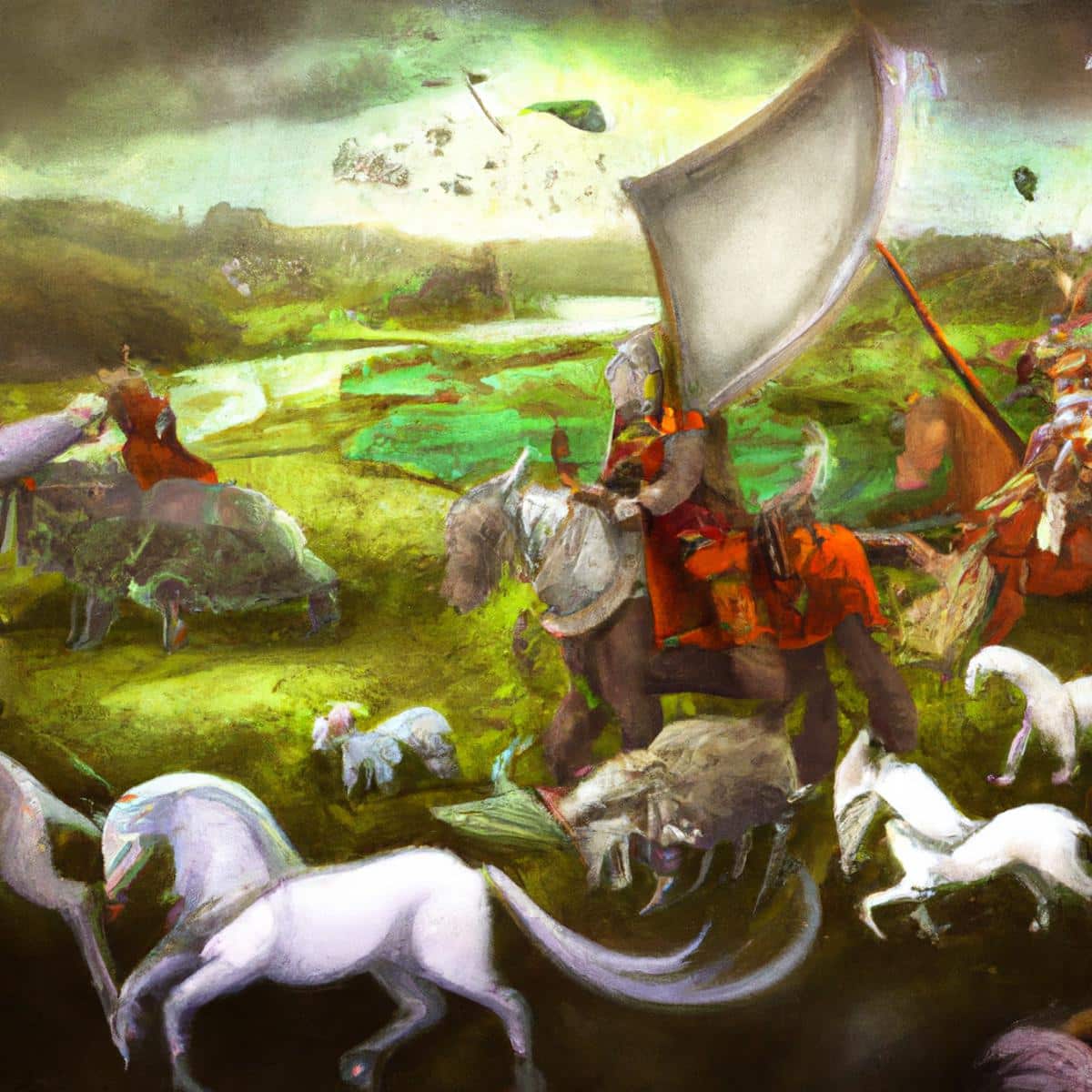
Gerd Courtship is an ancient traditional ceremony of the Saami culture, an indigenous tribe in Scandinavia. This ceremony was held to celebrate the marriage between two people and was held during the spring or summer. The procession began with a group of men mounted on horses who went out to pick up the bride. The bride was carried in a carriage decorated with flowers and branches, and the men sang songs as she was led to the place where the marriage would take place. Once there, the guests danced around the car while the couple exchanged gifts and words of love. At the end of the procession, the guests would gather to share food and drink before the couple set off together for their new life together. This ceremony is still practiced today by some Saami communities, but it has also been adopted by many other cultures as a way of celebrating marriage between two people.
Summary
Gerd courtship is an ancient Norse tradition dating back to the Iron Age. It is believed that it was created by the gods to celebrate the love between two people. The courtship consisted of a wedding ritual with various symbolic elements, such as the exchange of gifts, the blessing of the marriage by the gods, and the promise of fidelity between the couple.
During the courtship, the bride and groom appeared before their families and friends to announce their engagement. The groom's parents offered gifts to the bride as a sign of respect and loyalty. These gifts could include precious jewelry, weapons, or food. The ceremony also included a banquet where all the guests shared food and drink while singing traditional Norse songs to celebrate the betrothal.
Once both families had agreed to the terms of the marriage, a religious ceremony was held in which the gods were invoked to bless the couple and guarantee their eternal happiness. This ceremony was presided over by a priest or druid who pronounced sacred words while offering sacrifices to the Norse gods to ask the newlyweds for protection and prosperity. At the end of this ceremony, the priest delivered some sacred objects such as amulets or talismans intended to protect the couple throughout their lives together.
Finally, after the exchange of vows between both parties, the procession culminated with a festive dance where everyone participated dancing until the wee hours of the morning to celebrate the beginning of the new home formed by two people in love.
Main characters
Gerd was a beautiful and powerful goddess from Norse mythology. She was the daughter of the giant Ymir and was destined to become the wife of Freyr, the god of fertility. According to the stories, Freyr fell madly in love with Gerd upon seeing her for the first time. However, she was not willing to give herself up to him easily.
Freyr then decided to make a courtship to win Gerd's heart. He sent messengers to his father to ask for his hand in marriage, but Ymir flatly refused. He was determined that his daughter not marry a pagan god and required her to meet three tests before he would agree to the marriage.
The first test consisted of Freyr finding the best horse in the world and giving it to him as a wedding gift. The horse had to be as swift as the wind and as strong as the giants themselves. After many fruitless searches, Freyr finally found the perfect horse: Sleipnir, an eight-legged horse created by Loki, the god of deceit and mischief. Satisfied with this gift, Ymir allowed Freyr to proceed to the next test: to build a castle for Gerd as grand as the heavens themselves.
Freyr worked for months without rest until he completed this herculean task; thus building a castle called Glitnir where he and Gerd would live together after marriage. Finally the last tests came: Ymir now demanded that Freyr demonstrate his bravery by defeating the giant Beli with his bare hands without using any weapons or magic; he also had to do it without any divine or human help or support. Although the odds were unfavorable, Frery managed to defeat the giant Beli thanks to his strength, intelligence and ingenuity. Finally , after overcoming all the challenges imposed by Ymir , Gerd agreed to marry Frey . The marriage day was celebrated by all the Norse gods who offered precious gifts to celebrate this event. Since then, Frey has been considered the protector god of true love.
intervening gods
Gerd's courtship is an ancient Norse legend that tells the love story between the god Freyr and the giantess Gerd. The legend dates back to the early days of Norse paganism, when gods and mythical creatures were still revered by the ancient Norse peoples. According to legend, Freyr was one of the most important gods in the Norse pantheon, and his sister Freyja was a goddess known for her beauty and wisdom. When Freyr first saw Gerd, he fell head over heels in love with her.
Gerd was a beautiful giantess who lived in Jötunheimr, the kingdom of giants. She wasn't interested in Freyr at first; however, he was persistent with her attempts to win her heart. She finally decided to offer her precious gifts to win her love: precious jewels, shining armor and swift horses. This impressed Gerd so much that she finally agreed to marry him.
The wedding was celebrated with great pomp in Asgard (the home of the gods). The guests included many important figures from the Norse pantheon such as Odin (the father of all gods), Thor (the God of Thunder) and Heimdall (the keeper of the Bifrost). Various other mythical beings such as elves, goblins, and fairies were also in attendance to congratulate the happy couple. After the marriage ceremony, the procession returned together to the kingdom of Jötunheimr to live together as man and wife until the end of their days.
This story has inspired numerous art since then; everything from paintings to sculptures and even popular songs on the subject have been created for centuries to honor this legendary courtship between two worlds as distant as heaven and earth. It is clear that this legend continues to be a source of inspiration for many people today; especially those interested in Norse mythology or modern pagan culture
Main topics covered
Gerd courtship is an ancient Norse tradition dating back to the Middle Ages. This ceremony was carried out among the Nordic peoples to celebrate the marriage and union of two people. Gerd's courtship was a lengthy and complicated ritual, involving several stages and symbolic elements.
The first stage of Gerd courtship began with the groom presenting his offering to the bride, usually in the form of gifts or jewelry. This demonstrated her commitment to her and her desire to start a family together. Next, the groom's parents had to consent to the marriage, which meant that they had to be satisfied with the character of the future husband and with her intentions toward the bride. If the parents were satisfied, then they could proceed to the next step: the formal exchange of rings between the parties involved in the marriage.
After the formal exchange of rings, various symbolic rituals were performed to seal the marriage agreement. These ceremonies included things like drinking sacred wine together or sharing sacred food to demonstrate their mutual commitment to the relationship. In addition, there were also traditional songs that were sung by the guests throughout the ceremony to celebrate this important moment in their lives. Finally, after the formal exchange of rings and all the symbolic rituals associated with it, the procession was completed with a banquet where all the guests could enjoy together as they celebrated this joyous occasion.
Gerd's courtship was a very important event to ancient Norse cultures as it represented much more than just a marriage agreement; it also represented the creation of new family relationships between two different families and could even serve as a starting point for establishing politically important ties between two socially separated groups within the same medieval Norse kingdom. Therefore, this ritual was very important within the ancient Norse cultural context as it helped to strengthen social ties between different people and inclusively allowed to create lasting political alliances.



